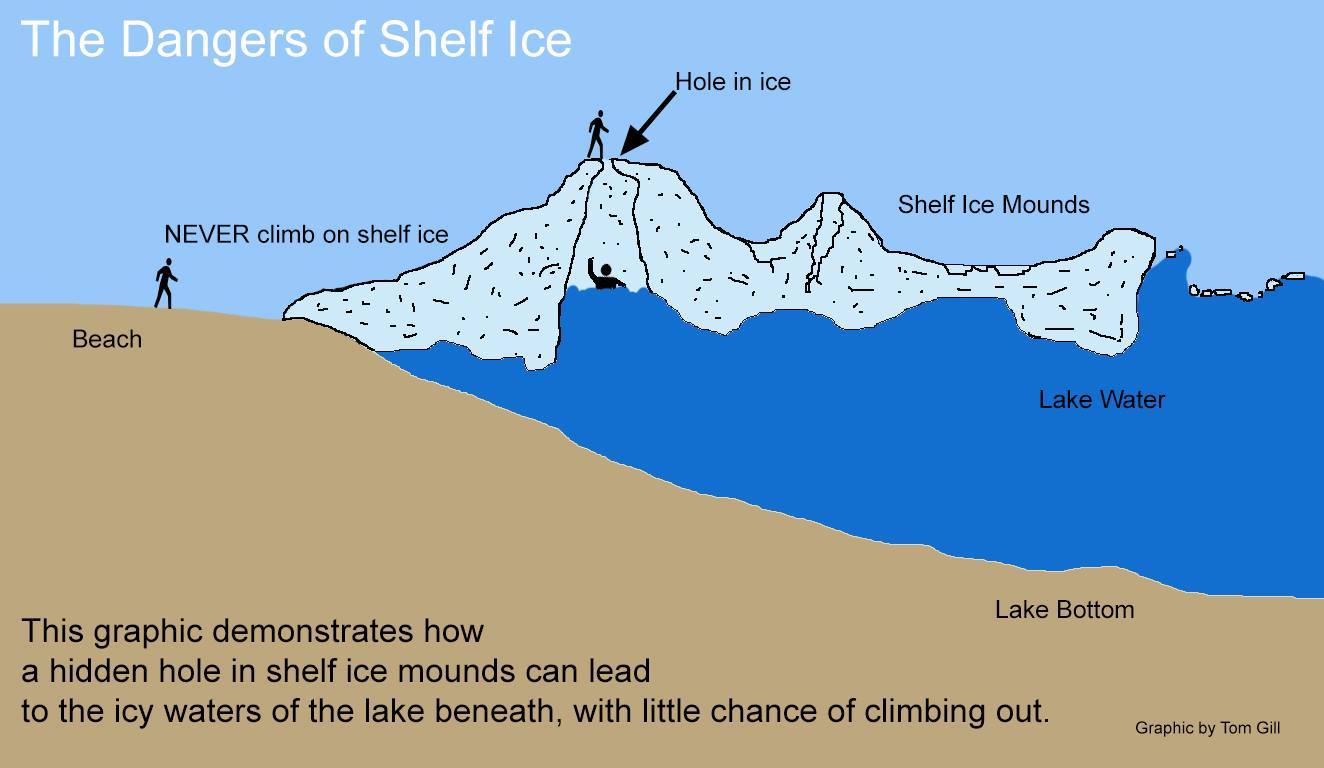February marks the peak of the Northern Michigan winter season. It can also be a potentially dangerous time for visitors who venture out to the Lake Michigan shoreline to take in the magnificent ice formations that often appear along the coast this time of year.
Shelf ice can be deadly and officials at the Sleeping Bear Dunes National Lakeshore recently released this helpful diagram on their Facebook page to demonstrate why.
Last February, offshore “ice caves” were all the rage among visitors to the Sleeping Bear Dunes. These incredible ice formations resulting from months of severe cold and powerful, shore-pummeling winds caused Lake Michigan ice to collect along coast in vast, seemingly unbroken sheets that in some places extended for miles offshore.
Looks can be deceiving; the danger of shelf ice is that it isn’t solid at all. Unlike small inland lakes where ice typically forms in a single sheet of a uniform thickness, shelf ice that collects along the shoreline of the Sleeping Bear Dunes is laced with cracks, fissures and “holes” covered with thin, weak ice created by the turbulence of the water below.
While no one was seriously hurt exploring the icy shoreline at Lakeshore last February, the same could not be said for other parts of the state—specifically near the Lake Michigan town of Grand Haven where at least three people had to be rescued after breaking through shelf ice.
To help educate visitors about the potential danger of shelf ice this season, Sleeping Bear officials offered this illustration to help show the potential danger it presents. Venturing onto the ice is “proceed at your own risk” endeavor and something that—if you must—should never to be attempted alone.
